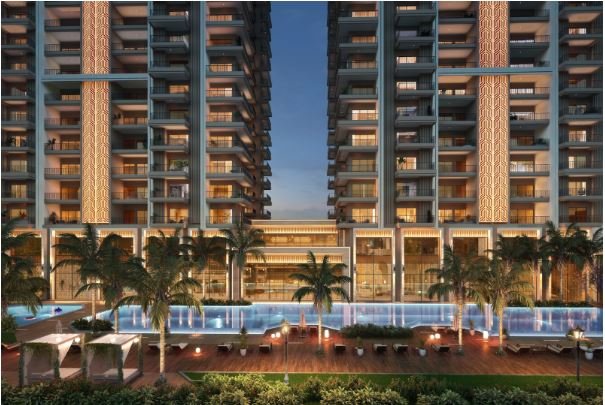Discover the La Liga stadiums with the best atmosphere, where fans create passion, history, and unforgettable football moments that define the league.
La Liga Stadiums With the Best Atmosphere for Football Fans
Spanish football is defined not only by its technical brilliance and global superstars but also by its breathtaking stadium atmospheres. In La Liga, stadiums are more than just concrete and steel—they are living, breathing temples where passion meets tradition, and where fans elevate the game into a cultural phenomenon. From the historic Camp Nou to the fortress-like San Mamés, the league is filled with arenas that inspire fear in opponents and pride among supporters.
This Dis88 article explores the La Liga stadiums known for their unmatched atmosphere, delving into their history, culture, and the fan energy that makes them iconic.
Why Stadium Atmosphere Matters in La Liga
Atmosphere plays a huge role in defining the identity of clubs within the league. A roaring crowd can turn a regular match into a spectacle, while the energy from the stands can lift players to perform beyond their limits. Stadiums in La Liga are often tied to:
- Cultural Identity: Clubs are deeply connected to their cities and regions.
- Emotional Impact: Fans create environments that intimidate opponents.
- Memorable Moments: Legendary matches are often remembered for their unforgettable atmospheres.
In La Liga, stadiums aren’t just venues—they are extensions of the people who fill them.
Camp Nou – Barcelona
The Camp Nou, recently renamed Spotify Camp Nou, remains one of the most iconic stadiums in world football. With a capacity exceeding 99,000, it is the largest football stadium in Europe.
- Atmosphere: The sheer size, combined with Barcelona’s global fanbase, creates a unique buzz. On big nights, especially El Clásico, the atmosphere reaches spine-tingling levels.
- Tradition: Home to legends like Messi, Xavi, and Iniesta, the Camp Nou has seen some of the most beautiful football ever played.
- Future: With ongoing renovations, it is expected to become even more spectacular, blending tradition with modern fan experiences.
Santiago Bernabéu – Real Madrid
The Santiago Bernabéu is synonymous with Real Madrid’s history of success. Known as one of the most intimidating stadiums in Europe, it combines luxury with ferocity.
- Atmosphere: Madridistas create a relentless energy, especially on Champions League nights. Opponents often describe the pressure as overwhelming.
- Heritage: It has witnessed unforgettable comebacks, including Real Madrid’s recent European triumphs.
- Modernization: The renovation project has transformed the Bernabéu into a state-of-the-art football venue without losing its intimidating aura.
San Mamés – Athletic Bilbao
Nicknamed “The Cathedral,” San Mamés is more than just a stadium—it is the soul of Basque football. Athletic Bilbao’s unique policy of only fielding Basque players amplifies the connection between fans and the team.
- Atmosphere: The intensity of Basque pride creates one of the most passionate stadiums in the league.
- Cultural Identity: The bond between players and fans is unmatched, as they share regional roots.
- Legacy: Even after moving to a modern version of San Mamés in 2013, the stadium has retained its fiery spirit.
Ramón Sánchez-Pizjuán – Sevilla FC
Sevilla’s Ramón Sánchez-Pizjuán is often hailed as one of the loudest stadiums in La Liga. The Andalusian fans are famous for their fiery chants and unwavering support.
- Atmosphere: The singing of the club anthem before kick-off creates goosebumps.
- European Nights: Sevilla’s dominance in the UEFA Europa League has made the Sánchez-Pizjuán legendary.
- Passion: The fans’ energy often intimidates opponents and inspires the home team to deliver extraordinary performances.
Benito Villamarín – Real Betis
Known for its passionate green-and-white fanbase, Benito Villamarín has become a fortress for Real Betis. With a capacity of over 60,000, it stands as one of Spain’s largest and loudest stadiums.
- Atmosphere: Betis supporters are among the most loyal and vocal in the league.
- Cultural Pride: Matches against Sevilla in the Seville Derby are considered among the fiercest in Europe.
- Emotion: The noise levels and passion often make Benito Villamarín an unforgettable footballing experience.
Mestalla – Valencia CF
The Mestalla is one of the oldest stadiums in Spain, famous for its steep stands that bring fans closer to the pitch. This creates an intense, claustrophobic environment for visiting teams.
- Atmosphere: The acoustics amplify the chants, creating deafening noise.
- Tradition: Valencia fans are known for their loyalty, even during difficult times.
- Unique Identity: Despite modernization delays, the Mestalla retains its raw and intimidating charm.
Wanda Metropolitano – Atlético Madrid
Atlético Madrid’s home, the Wanda Metropolitano, has quickly established itself as a fortress. Known for the relentless passion of Atléti fans, it is a modern venue that carries the spirit of the Vicente Calderón.
- Atmosphere: The roar of “Atleti! Atleti!” echoes across the stadium, lifting the team’s aggressive style of play.
- Legacy of Passion: Though relatively new, it has already hosted Champions League finals and unforgettable La Liga nights.
- Future Strength: Its design ensures fans remain close to the action, preserving the intensity that defines Atlético.
El Sadar – Osasuna
El Sadar, home of CA Osasuna, might not be the biggest, but it is one of the loudest. The stadium’s passionate fans make it one of the most intimidating places to visit.
- Atmosphere: Osasuna’s supporters generate non-stop noise, pushing their team against even the biggest clubs.
- Local Pride: The bond between Pamplona and the club is reflected in the raw energy of matchdays.
- Recognition: El Sadar has been voted as one of the stadiums with the best atmosphere in European football.
Why These Stadiums Define the League
What makes these stadiums so special is not just their size or design, but the passion of the fans who fill them. Whether it’s the global grandeur of Camp Nou, the intimidating presence of the Bernabéu, or the fiery pride of San Mamés, each stadium contributes to the unique identity of La Liga.
The atmospheres of these stadiums are not isolated experiences—they define the competitive balance, the emotional connection, and the spectacle of the league itself.
Final Thoughts
La Liga stadiums are more than football arenas—they are cultural landmarks. They host not just matches but traditions, rivalries, and moments that fans carry in their hearts forever. The spirit of Spanish football lives in these stadiums, where chants, songs, and celebrations make every match a festival of passion.
Celebrate the passion, history, and intensity that make Spanish football unique. Stand with the fans, support your favorite teams, and keep showing your love for the league that brings unforgettable stadium atmospheres to the world.














Leave a Reply